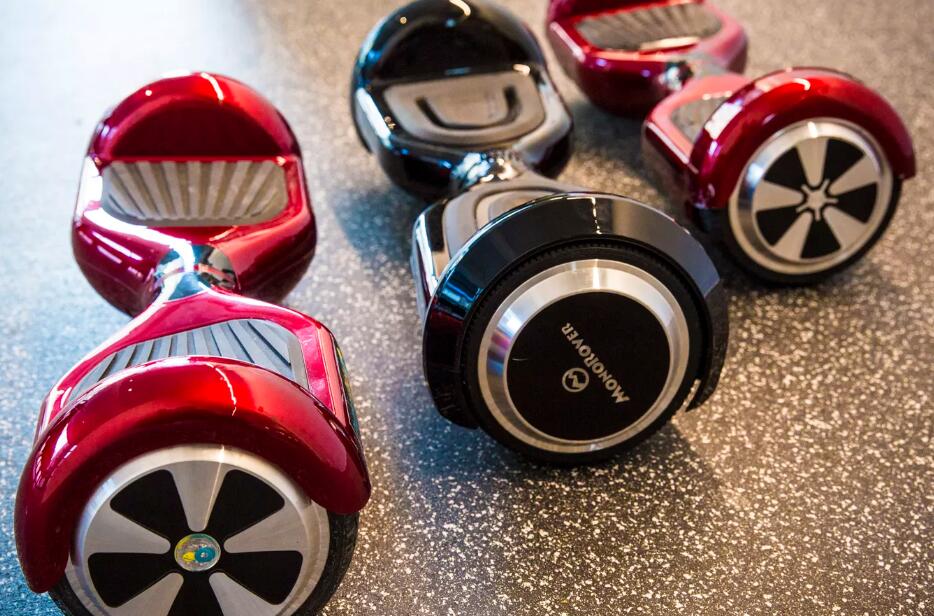Hoverboards have become a popular mode of transportation for people of all ages. Whether looking for a fun way to get around or a unique gift for a loved one, buying a hoverboard can be an exciting experience. However, with so many models and brands on the market, it can be overwhelming trying to find and choose the right hoverboard to meet your needs and budget.
This comprehensive guide will provide you with everything you need to know to find and purchase a safe, high-quality hoverboard. With the right information guiding your search, you’ll quickly become an expert on hoverboard technology and features.
Table of Contents
What Exactly Are Hoverboards and How Do They Work?
Before jumping into the hoverboard buying process, it helps to understand what exactly these futuristic-looking gadgets are and how their technology allows them to operate.
Hoverboards are best described as self-balancing electric scooters. They typically consist of two side-by-side wheels beneath a central platform that the rider stands upon. But unlike regular scooters, hoverboards do not have a steering column.
So how do they move? Hoverboards rely on advanced gyroscope and accelerometer technology to detect even the slightest shifts in weight and movement from the rider.
You don’t control it with your hands. Instead, just step on the platform, lean slightly forward or backward to get going, twist your feet to turn, and keep shifting your weight and balance in the direction you want to travel.
It almost feels like magic the first time you try a hoverboard! The internal gyroscopes and accelerometers are so sensitive that they can pick up these subtle weight distribution and leaning cues from the rider and detect which way you want to go.
The sensors send signals to the small electric motors located inside the wheels, which then propel the hoverboard forward or backward to match the direction you are leaning.
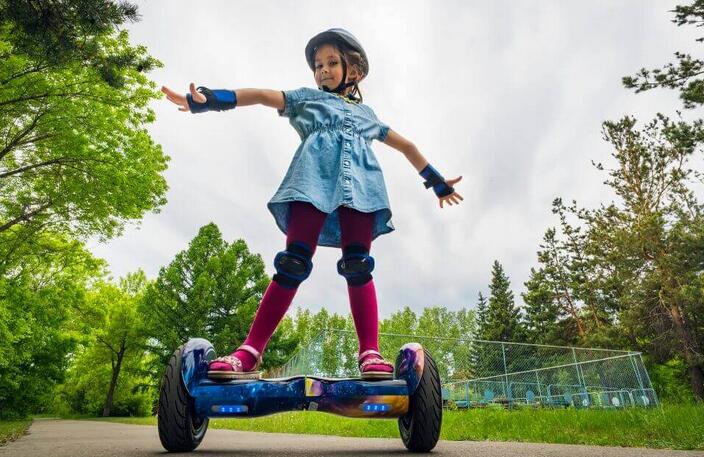
Factors to Consider When Buying a Hoverboard
1. Safety
When purchasing a hoverboard, safety should be your top priority. Look for models that are UL 2272 certified, which means they have undergone rigorous safety testing and meet strict electrical and fire safety standards. Avoid purchasing hoverboards from unknown or untrusted sources, as they may not meet safety requirements.
2. Wheel Size
Hoverboards come in different wheel sizes, typically ranging from 6.5 inches to 10 inches. Larger wheels offer better stability and a smoother ride, especially on rough surfaces. However, they also make the hoverboard heavier and less portable. Consider your intended use and the terrain you’ll be riding on when choosing the appropriate wheel size.
3. Range and Speed
Pay attention to the hoverboard’s range (distance it can travel on a single charge) and maximum speed. If you plan to use your hoverboard for commuting or longer rides, look for models with a higher range. Keep in mind that the actual range may vary depending on factors such as rider weight, terrain, and riding style.
4. Weight Limit
Each hoverboard has a maximum weight limit that it can safely support. Make sure to choose a model that can accommodate your weight to ensure optimal performance and safety. Some hoverboards are designed specifically for kids, with lower weight limits and additional safety features.
5. Brand and Customer Reviews
Consider purchasing hoverboards from reputable brands with a proven track record of quality and safety. Read customer reviews to get an idea of the hoverboard’s performance, durability, and customer service. Look for models with high ratings and positive feedback from verified purchasers.
Where to Find and Purchase Hoverboards?
Here are some best places to buy hoverboards, ensuring you find the perfect model to suit your needs and budget.
Online Retailers
1. Amazon
Amazon is one of the most popular online destinations for purchasing hoverboards. They offer a wide variety of models from different brands, catering to all skill levels and preferences.
With competitive prices, detailed product descriptions, and customer reviews, Amazon makes it easy to compare and choose the right hoverboard for you. Some popular options include the Gotrax Hoverboard with 6.5″ LED Wheels and the Hover-1 Drive Electric Hoverboard.
2. Best Buy
Best Buy is another excellent online retailer for hoverboards. They stock a range of self-balancing scooters and fun hoverboards suitable for kids and adults.
Best Buy offers competitive pricing and often runs promotions, making it a great place to find deals on hoverboards. You can easily browse their selection online and have your chosen model shipped directly to your door.
3. Walmart
Walmart’s online store features an extensive collection of hoverboards from various brands. They offer models with different wheel sizes, features, and price points, making it easy to find one that fits your requirements.
Walmart also provides detailed product information and customer reviews to help you make an informed decision. Some popular options include the GOTRAX Glide Hoverboard and the Hover-1 Ultra Electric Hoverboard.
4. Target
Target’s online store is another great place to shop for hoverboards. They offer a curated selection of models from trusted brands, ensuring you find a reliable and safe option.
Target provides detailed product descriptions, specifications, and customer reviews to help you choose the perfect hoverboard. They also offer competitive prices and occasional discounts, making it a budget-friendly option.
Specialty Retailers
1. DICK’S Sporting Goods
DICK’S Sporting Goods is a specialty retailer that offers a range of hoverboards both online and in-store. They stock models from popular brands and provide expert advice to help you find the right one for your needs. DICK’S Sporting Goods also offers a Best Price Guarantee, ensuring you get the most competitive price on your chosen hoverboard.
2. Hoverboard Specialty Stores
There are several online specialty stores dedicated solely to hoverboards. These stores offer a wide selection of models, accessories, and replacement parts. They often have knowledgeable staff who can provide expert advice and assistance in choosing the perfect hoverboard. Some popular hoverboard specialty stores include Hoverboard.com, StreetSaw.com, and HoverboardPro.co.
Brick-and-Mortar Stores
1. Best Buy
In addition to its online store, Best Buy also has physical locations where you can see and test hoverboards in person. This allows you to get a feel for the different models and make a more informed decision. Best Buy’s knowledgeable staff can also provide guidance and answer any questions you may have about hoverboards.
2. Walmart
Walmart’s physical stores often carry a selection of hoverboards, allowing you to see them up close before making a purchase. While the in-store selection may be more limited compared to their online offerings, it’s still a convenient option if you prefer to shop in person.
3. Target
Many Target locations have a dedicated section for hoverboards and other electric rides. You can browse their in-store selection, get a feel for the different models, and even test them out before making a decision. Target’s knowledgeable staff can also assist and answer any questions you may have.
4. Sporting Goods Stores
Local sporting goods stores, such as DICK’S Sporting Goods, may carry hoverboards in their physical locations. These stores often have knowledgeable staff who can provide expert advice and help you find the right model for your needs. Shopping in-store also allows you to see and test the hoverboards before making a purchase.
When deciding where to buy your hoverboard, consider your priorities and preferences. If you value the ability to see and test the hoverboards in person, Best Buy and DICK’S Sporting Goods are great options.
If you’re looking for the widest selection and competitive prices, Amazon is hard to beat. For expert advice, niche accessories, and replacement parts, specialty retailers are the way to go.
Regardless of where you choose to buy your hoverboard, be sure to do your research, read customer reviews, and compare prices and features across different retailers.
Key Buying Considerations and Making the Best Choice
To recap, keep these key factors in mind as you evaluate different hoverboard options to determine the best choice for your needs and budget:
1. Set Your Budget
Expect costs to range from $100 for smaller used models up to $500+ for premium hoverboards packed with features. Setting a firm budget beforehand helps narrow the options. Standard mid-range boards run $200 to $400 usually.
2. Desired Use and Riding Terrain
Consider when and where you plan to ride most. Boards with 6.5-8-inch wheels work well for indoor and flat outdoor terrain like sidewalks or driveways. Larger 8-10-inch tires are better for moderate outdoor conditions like parks and trails. True off-road hoverboards can handle rough conditions.
3. Skill Level
If you’re a total beginner, look for hoverboards with maximum speeds of 5 mph or less while learning and steering assistance features like handlebars. More advanced riders can handle faster speeds like 7-10 mph.
4. Range Per Charge
Standard batteries allow 7-12 miles per charge, while upgraded batteries in pricier boards can extend up to 15-20 miles of range. Plan your typical trip distance.
5. Weight Limits
Check the listed weight capacity and don’t exceed it. 220 pounds is common for basic models. More rugged designs support up to 300+ pounds.
6. Reviews
Reading user reviews on Amazon, YouTube or forums can provide insight into real rider experiences with specific hoverboard models to inform your choice.
7. Safety First
Never compromise on safety – only buy UL 2272-certified hoverboards with name-brand batteries from reputable retailers. Prioritize this over all else.
8. Warranties
Aim for at least a 6-month warranty to cover any defects or issues with parts/performance. Some offer 1 year or longer.
What Price Range is Typical?
Pricing for self-balancing hoverboards can vary quite a bit depending on factors like size, power, features, and quality. But in general, these are the typical price ranges you can expect:
- Basic hoverboards for beginners – $120 to $250
- Mid-range standard models – $250 to $400
- High-end standard models – $400 to $500+
- All-terrain off-road hoverboards – $300 to $700+
- Refurbished or used hoverboards – $100 to $250
- Mini hoverboards for kids – $100 to $300
- Hovershoes – $100 to $300
In the standard 6.5-10-inch hoverboard category, you’ll commonly find:
- Entry-level boards under $250 – These affordable models cut back on features and power. Just be sure safety isn’t compromised.
- Mid-range boards $250-$400 – This price point gets you a good quality hoverboard with decent speed, range, and durability.
- High-end boards $400-$500+ – Top-of-the-line standard hoverboards boast extras like Bluetooth, apps, and premium batteries.
- Refurbs under $250 – Used boards or factory-reconditioned ones can offer big savings. Inspect condition closely before buying.
For all-terrain and off-road models with larger tires and suspension, expect to spend $300 to $700+. Mini hoverboards for younger kids and lightweight riders cost a more affordable $100 to $300.
The cheapest boards often cut corners that compromise quality and safety, so be wary of anything under $100 and heavily discounted deals that seem too good to be true. Spending a bit more ensures you get a solid product that will last and work properly. Consider it an investment in both fun and mobility!
Conclusion
When looking to purchase a hoverboard, there are numerous options available both online and in-store. Online retailers like Amazon, Best Buy, Walmart, and Target offer a wide selection of models with competitive prices and detailed product information. Specialty retailers such as DICK’S Sporting Goods and dedicated hoverboard stores provide expert advice and a curated selection of high-quality models.
If you prefer to shop in person, brick-and-mortar stores like Best Buy, Walmart, Target, and sporting goods stores often carry hoverboards, allowing you to see and test them before making a purchase. When choosing a hoverboard, prioritize safety by looking for UL 2272-certified models and consider factors such as wheel size, range, speed, weight limit, brand reputation, and customer reviews.
Related posts:
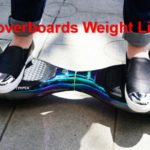 What’s the Weight Limit for Hoverboards? An In-Depth Guide
What’s the Weight Limit for Hoverboards? An In-Depth Guide  What Does a Hoverboard Look Like: Unveiling the Futuristic Ride
What Does a Hoverboard Look Like: Unveiling the Futuristic Ride  13 Hoverboard Tricks for Every Rider (Easy & Advanced)
13 Hoverboard Tricks for Every Rider (Easy & Advanced) 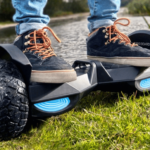 Onewheel vs Hoverboard: Which One is Better for You?
Onewheel vs Hoverboard: Which One is Better for You? 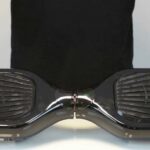 How to Reset or Calibrate a Hoverboard Step by Step
How to Reset or Calibrate a Hoverboard Step by Step 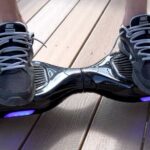 Ultimate Guide to Choosing the Right Hoverboard Size for You
Ultimate Guide to Choosing the Right Hoverboard Size for You
